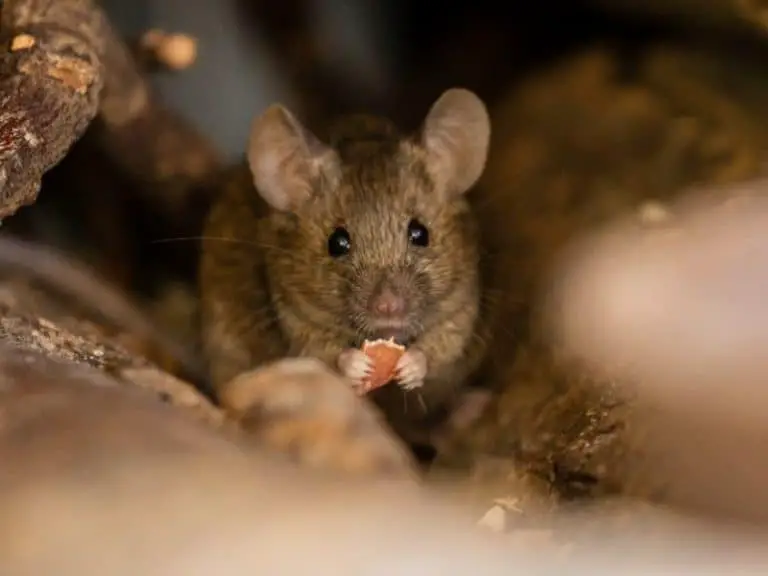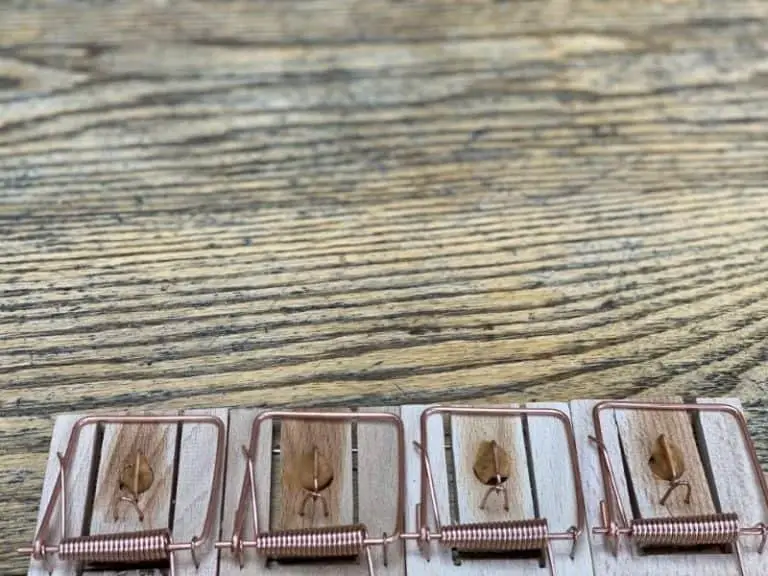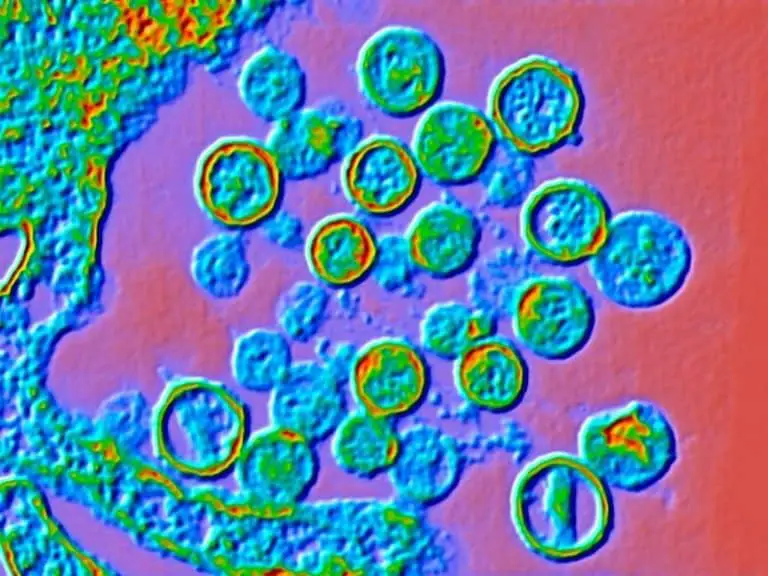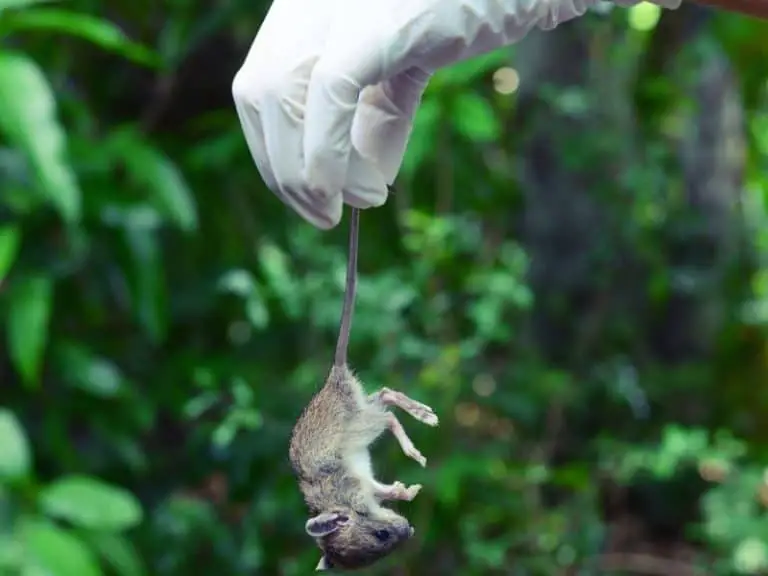Do Mice Know When A Cat Is In The House?
Ever wonder if mice know when there’s a cat in the house? The cartoon story of Tom & Jerry’s never-ending cat and mouse chase drives the point across that the mouse runs free from the cat.
If you bring the same scenario to your home, what are you going to do when you hear mice scratching through the walls while your cat turns ballistic to hunt for it?
Mice have a vomeronasal organ in their noses that can track the presence of a cat. Also, mice can smell the cat’s emitted proteins called Mups that come from cat saliva. And finally, mice have an aversion to cat urine, so placing a used cat litter in the house will repel the rodents.
Our houses are places we live and breathe in. It is alarming when mice are present and chased away pronto.
Having a pet cat doesn’t stop the mice from breeding in unoccupied spaces, but there are different ways to control it and drive them out of the house.
How Mice Detect Cat’s Presence
Mice are not only small creatures but also crafty ones who can slip through walls and small holes of any part of the house.
They have a sharp sense of smell called the vomeronasal organ that singles out Mups, the cat’s protein coming from their saliva.
Mice have a neuron in their sensory organ that detects chemical signals produced by a cat. Lastly, they can’t stand the smell of cat urine, so the helpful litter box is a useful deterrent.
According to the Scripps Research Institute, mice have an organ connected to the memory, emotion, and hormone release parts of the brain. It gives the signal of fear when it detects predators like cats and snakes.
The evolved receptors of mice allow them to track cats or any threat they perceive as being attacked or being eaten.
Given the above information, it is the natural tendency of the mouse to avoid the cat.
Mice navigate the small areas of your home to scrounge for food and soft paddings for their nesting areas without having a face to face interaction with your cat.
Places Do Mice Hide In The House
Mice will set up their nest in secluded, unoccupied, and hard to reach areas of the house.
Places such as the attic, cluttered rooms of coats or old shoes, garages, crawlspaces, pipes, and walls are their favorite nesting grounds.
Mice get comfortable in the kitchen or bathroom cabinets, desk drawers, or stored cardboard boxes.
Mice come out after sunset to hunt for food and nocturnal.
They eat plant materials but will eat whatever is available in the house. That includes dairy and meat products as well as munching on a bar of soap, glue, or paper.
Mice being protective of their brood will choose areas where they can be safe from being seen or heard by a cat.
They reproduce so rapidly, with the female mice birthing a litter of four to twelve mice pups. They will scrounge for cloth materials or cardboard to make a soft padding area for their babies.
Cat Breeds That Can Control The Mice Infestation

Your pet cat is part of your family and a fluffy companion at home. They are all over the house and play in the garden or out in the yard.
Cats enjoy the thrill of a hunt and will stalk prey without the intent of eating it. Most of the time, they are excited and end up killing the animal by mistake, but not exactly making a meal out of it.
Not all cats enjoy hunting for mice and some even avoid it.
There are breeds that have natural hunting instincts, and these are the best cat breeds for catching mice. They include American Shorthair, Persian, Siamese, Siberian, Burmese, Maine Coon, Chartreux, Turkish Angora, Japanese Bobtail, and Manx.
Even if your cat is of the hunting variety, it can’t reach the elusive mice hiding in tight and small areas.
There is a danger of your cat getting fleas, ticks, parasites, as well as Hantavirus or Lyme Disease. The mice will continue their business of breeding while the cat tirelessly searches for their nesting places.
How Mice Enter The House
In every stand-alone house or building unit, the contractors have a structural opening to accommodate the electricals, data lines, gas, and water.
This entry point is where mice travel through the utility lines coming from the dirt or sewer. Their bodies can squeeze in small and tight spaces like the wall or floor cavities, thus making a successful entry into their new abode.
Trash bags or unsealed food is a big invitation not only for mice but also for scavenger animals.
Your trash bin has now become a steady supply of their food requirements. Even if you keep your kitchen spotless and clean, the unsealed food is too much temptation for mice to pass on.
Incidentally, they prefer dry foods like crackers, pasta, bread, and junk food, so it is best to keep the garbage lid tightly shut.
Relocation from a previous location is another reason why Mice enter your house. If your next-door neighbor had their pest control or mice treatment, the mice run to the next nearest location, which is your house.
Some DIY Home Repellents For Mice
While it is always best to get the professionals to do pest and mice treatment, you can do your part to keep the mice away. Preventive control is something you can do on your own.
- Sealing the holes and cracked openings in the walls, baseboards, and flooring that are the entry points of mice.
- Douse a cotton ball with peppermint oil or ammonia and leave it on the areas you suspect they are hiding in.
- Fill a cheesecloth with a concoction of cayenne pepper, cloves, and mint because mice do not like this scent.
- Scoop used cat litter and scatter it outside your house perimeter because mice cannot stand cat urine.
- Purchase a Plugged-in Ultrasonic mouse repeller that plugs into the socket near their suspected nesting places.
- Natural mouse repellent spray that you can douse on your trash bins and areas near the pantry to discourage the mice from the food source.
Trapping the mice is the best way to catch their family because they move in packs. These are some suggestions to trap the mice.
- Use a 5-gallon bucket and put a metal wire across the top. Cut a small hole in one side of the peanut butter smeared soda can and run the wire through it. Mice will climb up and walk across the wire to get the bait. The can will spin, and the mice will fall into the bucket.
- Cut a rectangular hold o the shoebox and cover it with glued paper. Place food or bait in the middle to lure the mouse and climb on top of the box. Once the mouse reaches the top, the glued paper will collapse because of the weight. The mouse gets trapped inside the shoebox.
- Balance the empty tissue roll on the edge of a table that has a standby trashbin. Put the bait near the end of the tissue roll. When the mouse crawls to get the food, the tissue will topple down to the trash bin.
Related Questions
How do cats catch mice?
Cats have a reflective layer in the eyes called the tapetum, as well as a sharp sense of hearing for their hunting instincts.
They are natural pouncers who are attracted to the skittering movement of the mouse. They will wait for the mouse and jump on it using their paws to tackle it down.
What to do when our cat catches a mouse?
Using gloves to clean up a decapitated mouse, then disinfect with bleached hot water. Bring your cat to the vet to be sure your cat has not contracted roundworms or a parasite called toxoplasmosis.
Does cat litter keep mice away?
Cat litter is the most natural alert signal for new mice. It is a cheap and effective mice deterrent because they have an aversion to cat urine.
Photo credit: ©canva.com/zsv3207, ©canva.com/AlineNédélec
Medical Disclaimer: TheHomePestControl is a digital publisher and does not offer personal health or medical advice. The contents of this website are not intended to substitute for professional medical advice, diagnosis, or treatment.
Affiliate Disclaimer: As an Amazon Associate, I earn from qualifying purchases made on our website. If you make a purchase through links from this website, I may earn a commission at no additional cost to you.






